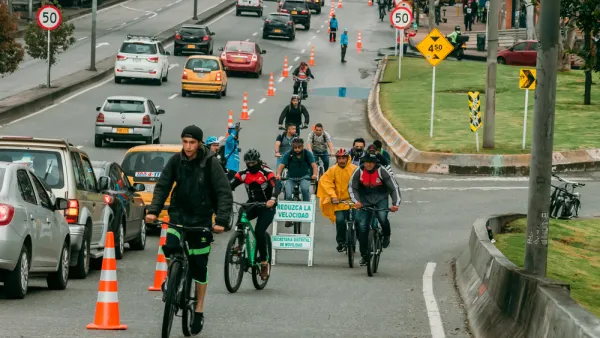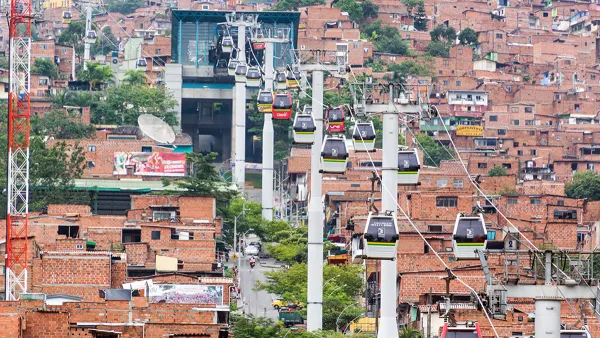Michael Kimmelman reports on the strong ties that exist between the economic and social well-being of a city and its architecture, infrastructure and public spaces, as evinced in Bogotá, Colombia.
Designers, architects and city planners have the ever open-ended task of creating working environments that serve their populations. But if not carefully evaluated and looked after, civil infrastructure, which acts as the skeleton of a city, can become a hindrance. As is the case in the city of Bogotá, whose own infrastructure has seen its ups and downs as proper maintenance waned and promises for expanded transit routes were left unfulfilled. As a result, residents were left with pieces of a city and no sustaining leadership in which to pull it all together.
So what happened in Bogotá, the city celebrated for the transformations led by two pioneering mayors - Antanas Mockus and Enrique Peñalosa - and now finds optimism at its lowest point in 15 years?
"The worst thing for a Latin man is to find himself raising another man's child," stated Mockus, the former mayor and university professor. As Kimmelman explains, this statement describes the, "refusal by many Colombian politicians to adopt plans their predecessors conceived, instead preferring to invent their own."
The built environment, Kimmelman writes, has an incredible ability to instill and restore a city's sense of optimism and civic self-esteem. Bogota hosts a wealth of builders who hold this belief, and buildings like the El Tintal Public Library and the Jardín el Porvenir kindergarten have imbued a feeling of positive well-being in the community despite the city's recent steps backward.
Urban planner Lorenzo Castro speaks of the need for hope in Bogotá and the healing power of such buildings as the El Tintal Public Library: "People in the neighborhood live in a room with five people in a small house with three other families, but they go there and see the space, the construction, the comfort and safety. And suddenly, maybe for the first time, they feel included in society, in the city. They can dream."
FULL STORY: Past Its Golden Moment, Bogotá Clings to Hope

National Parks Layoffs Will Cause Communities to Lose Billions
Thousands of essential park workers were laid off this week, just before the busy spring break season.

Retro-silient?: America’s First “Eco-burb,” The Woodlands Turns 50
A master-planned community north of Houston offers lessons on green infrastructure and resilient design, but falls short of its founder’s lofty affordability and walkability goals.

Delivering for America Plan Will Downgrade Mail Service in at Least 49.5 Percent of Zip Codes
Republican and Democrat lawmakers criticize the plan for its disproportionate negative impact on rural communities.

Test News Post 1
This is a summary

Test News Headline 46
Test for the image on the front page.

Balancing Bombs and Butterflies: How the National Guard Protects a Rare Species
The National Guard at Fort Indiantown Gap uses GIS technology and land management strategies to balance military training with conservation efforts, ensuring the survival of the rare eastern regal fritillary butterfly.
Urban Design for Planners 1: Software Tools
This six-course series explores essential urban design concepts using open source software and equips planners with the tools they need to participate fully in the urban design process.
Planning for Universal Design
Learn the tools for implementing Universal Design in planning regulations.
EMC Planning Group, Inc.
Planetizen
Planetizen
Mpact (formerly Rail~Volution)
Great Falls Development Authority, Inc.
HUDs Office of Policy Development and Research
NYU Wagner Graduate School of Public Service




























